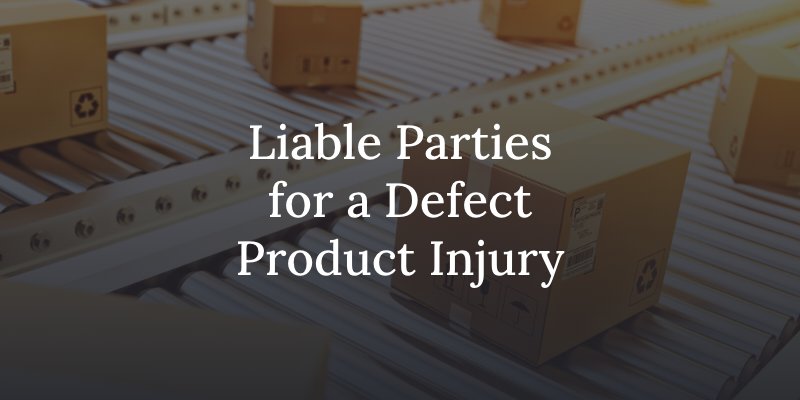We like to think the products we purchase and use according to directions are safe and reliable, but around 28,535,000 injuries requiring medical treatment occurred in a single recent year in the U.S. due to harm caused by consumer products. While most personal injury claims require evidence of another party’s negligence, recklessness, or intentional wrongdoing, an injury claim against a manufacturer or other entities involved in the sale of a product uses the strict liability doctrine. This type of claim doesn’t require proving negligence but has different liability standards. Depending on the unique circumstances of the case, a person injured by a defective product can recover their damages from a manufacturer, but other parties could also share liability. Understanding liability in defective product claims helps an injury victim maximize their compensation through a successful St. Louis product liability claim.

Defective Product Liability
Under Missouri §537.760, the law states the following: “The term “products liability claim” means a claim or portion of a claim in which the plaintiff seeks relief in the form of damages on a theory that the defendant is strictly liable for such damages because:
- The defendant, wherever situated in the chain of commerce, transferred a product in the course of his business; and
- The product was used in a manner reasonably anticipated; and
- Either or both of the following:
- The product was then in a defective condition unreasonably dangerous when put to a reasonably anticipated use, and the plaintiff was damaged as a direct result of such defective condition as existed when the product was sold; or
- The product was then unreasonably dangerous when put to a reasonably anticipated use without knowledge of its characteristics, and the plaintiff was damaged as a direct result of the product being sold without an adequate warning.”
In other words, proving liability in a defective product claim requires showing that a product’s design flaw, manufacturing mistake, or marketing error directly caused injury and that the injury victim suffered damages from the product even when they used it appropriately.
Potential Liable Parties in Defective Product Claims
It takes many entities to bring products to the retail shelves and into the homes of consumers. Any of these parties could be liable for an injury victim’s damages, like medical expenses, and lost earnings, or several parties could share liability. Common liable parties in defective product claims include the following:
- The manufacturer
- A product’s designer
- The marketing company
- Distributors
- Wholesalers
- Quality controllers
- Suppliers
- Retailers
All of the above parties are under strict liability, with the legal duty to ensure that products sold to consumers are safe. In states like Missouri with comparative negligence insurance laws, multiple parties could be held liable for portions of the victim’s damages with a percentage of liability attributed to each involved party.
Seeking Damages In Defective Product Claims
To recover compensation after a serious injury caused by a product’s design defect, manufacturing mistake, or marketing error, requires proving that the injury caused economic and non-economic damages. Common damages recovered in defective product claims include past and future medical expenses, lost earnings, and compensation for pain and suffering. In some cases, injury victims recover compensation for additional damages such as compensation for traumatic limb loss, the loss of one of the senses, disfigurement, or diminished quality of life. A St. Louis personal injury attorney investigates all aspects of a defective product claim to document evidence of liability from all contributing parties. Then they make a carefully calculated list of damages to maximize the compensation an injury victim recovers.

